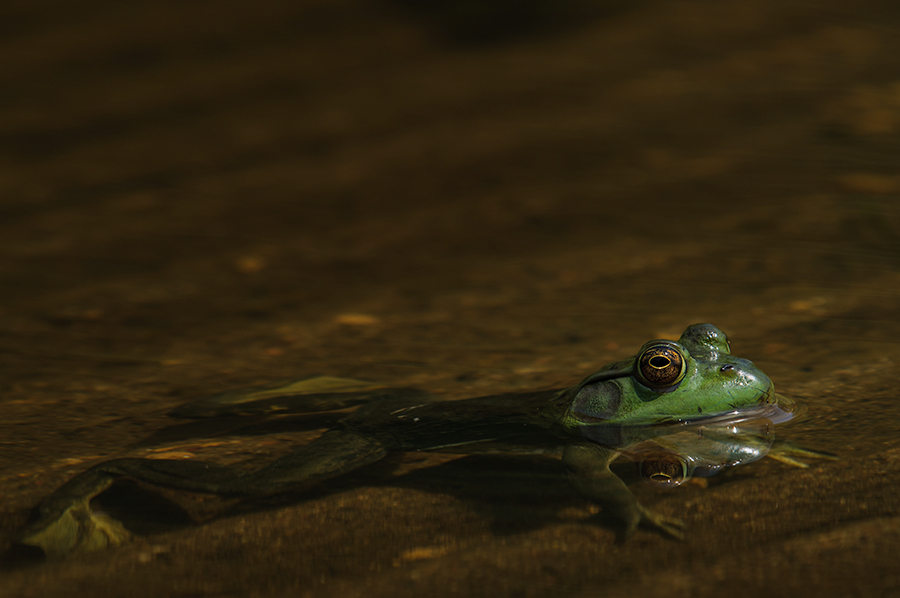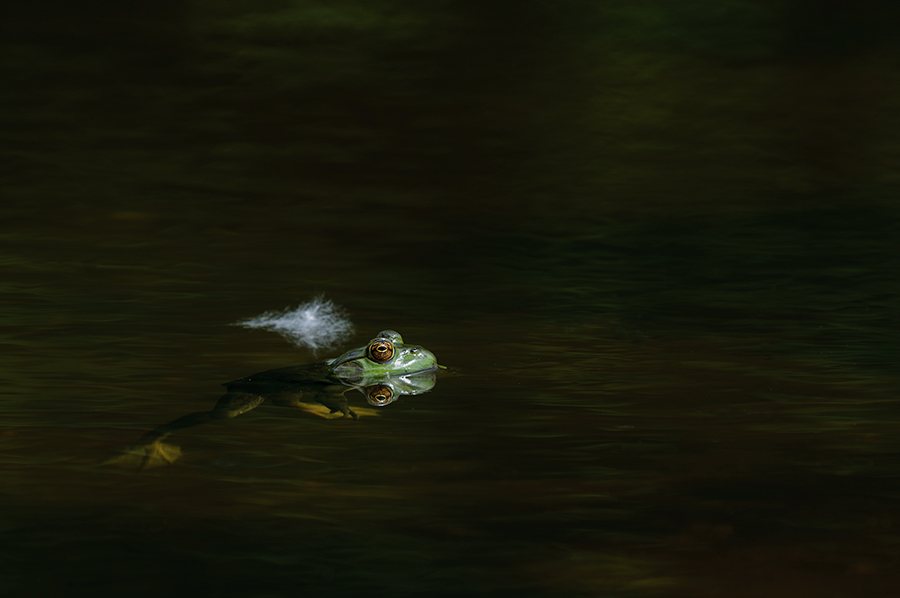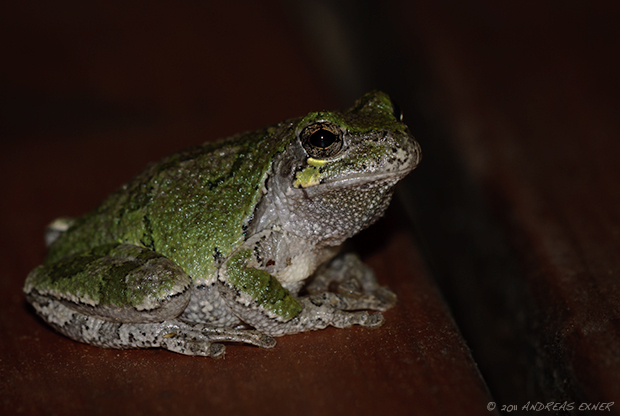
This is our “house frog”, a little Common Gray Tree Frog. It lives on our balcony, under a canopy of grape vine leaves and between flower pots that we have outside during the summer. The 4 - 5 cm long (1.5 - 2 inch) frog is always good for a surprise and we see it quite often. The Gray Tree Frog can change its color in seconds and this helps it to blend in with tree bark or leaves. They are nocturnal and spend the day resting in trees and shrubs, or like this one, in the plants on our balcony. One of the most interesting facts is that the frog is capable of surviving freezing of their internal body fluids to temperatures as low as -8°C (17.6°F).

It took me quite some time to figure out how to light my subject and to make these photos in very low light between the branches of a Crassula ovata plant. Luckily the frog was cooperative and didn’t move too much. The best results were obtained by using a camera off flash, pointing upward, and using just the light that bounced back from the grapevine leaves that grow above.










